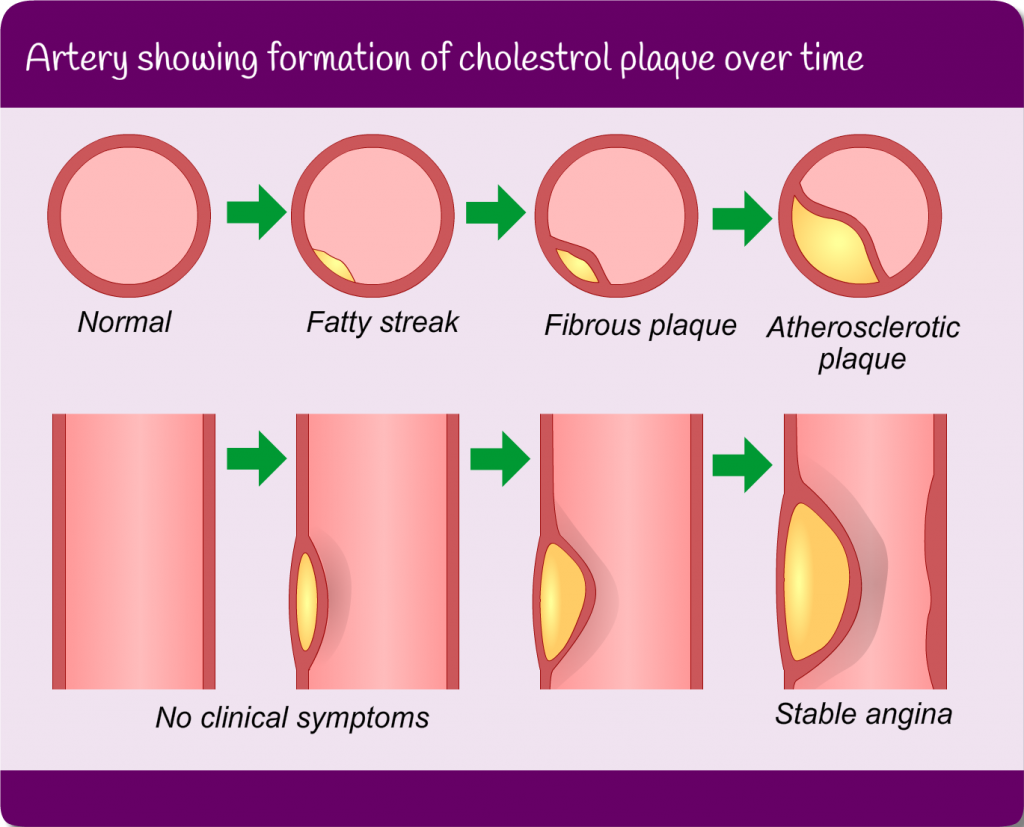When the build up of atherosclerosis and atheroma affects the coronary arteries, it is called coronary artery disease (CAD) or coronary heart disease (CHD). When this affects the whole cardiovascular systems it is called cardiovascular disease (CVD).
Pathophysiology
When fatty deposits build up (arthrosclerosis) in the body the vessels become narrowed and there is a reduced amount of blood supplied to the cardiac muscle. This deposit is called atheroma.

Angina
Angina is the main symptom of myocardial ischaemia and is usually caused by atherosclerotic obstructive coronary artery disease restricting blood flow and, therefore, oxygen delivery to the heart muscle (NICE 2011).
Risk Factors
Risk factors refer to those factors which are likely to increase the risk of developing atherosclerosis and, therefore, CHD.
The image below shows stable encapsulated plaque, narrowing the lumen of the artery by approximately 50%.
| Artery showing formation of cholesterol plaque over time | |
|---|---|
| No clinical symptoms | Stable angina |
| Normal artery
Fatty streak artery Fibrous plaque artery |
Atherosclerotic plaque artery |
Page last reviewed: 29 May 2020


